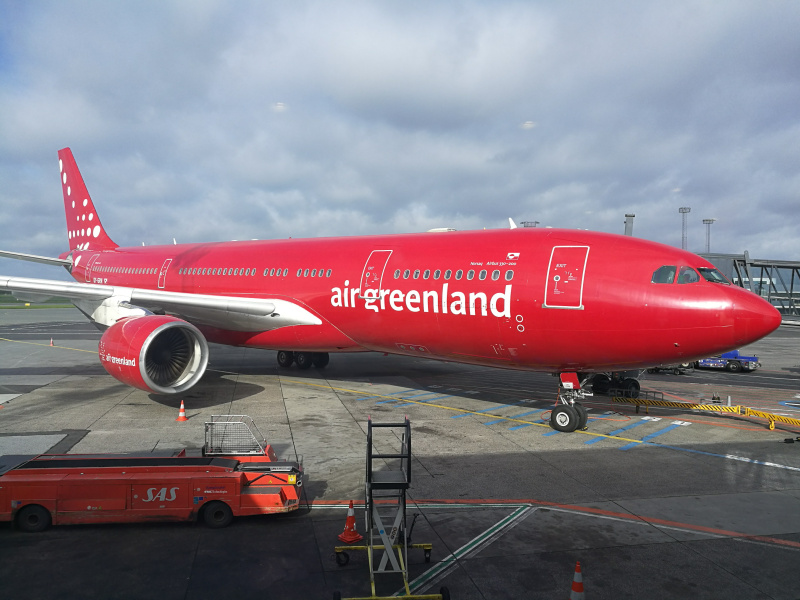Blog – Tales of the unexpected: Inuit shepherds in Greenland

In Greenland, there’s a joke that if you go out to dinner with a Greenlandic people, there’s five people: mom, dad, the two kids, and an anthropologist. Be that as it may, many social scientists who study the Arctic have never been to Greenland given its relative remoteness. It’s only possible to fly to the world’s largest island from Denmark and Iceland, and flights cost a pretty penny.
Climate change scientists receive millions of dollars to study the Greenland Ice Sheet, which covers 80% of the country’s surface and has the potential to dramatically raise global sea level should it continue melting as models predict. In contrast, social scientists just don’t have as many opportunities to research Greenland’s 56,000 inhabitants and the many issues that affect them.
So it should come as no surprise that when the Arctic-FROST research network decided to hold its annual meeting in Qaqortoq, a settlement of about 3,000 people in southern Greenland, I jumped at the chance to apply. Arctic-FROST is a National Science Foundation-funded project based out of the University of Northern Iowa that aims to build an international, interdisciplinary collaborative network of environmental and social scientists, local educators, and community members from all eight circumpolar countries. While I had attended a previous Arctic-FROST workshop in St. Petersburg, Russia, I was over the moon when I found out I was accepted to the workshop in Qaqortoq, whose theme focused on community sustainability in the Arctic while importantly taking place in a small, northern settlement. A few months later, I found myself standing with 17 other eager polar researchers at the airport in Copenhagen, meeting each other at the gate before boarding our ruby red Air Greenland plane to Kangerlussuaq.

As some of you might remember, I traveled to Greenland in August 2014 to assist with hydrological fieldwork on the ice sheet. With my research group from UCLA, led by Professor Laurence Smith, we were studying the turquoise blue rivers that form each summer on top of the ice as temperatures rise. It was an otherworldy feeling to walk on top of the part of Greenland that is still marked as “unexplored” on contemporary maps of the country. Yet spending most of my time either on the ice sheet or in the aviation and research hub that is the town of Kangerlussuaq meant that I didn’t get the chance to experience life in a larger Greenlandic settlement with a history that predated World War II.

The past week in Qaqortoq with Arctic FROST changed all that. While our experience was still admittedly far from that of the average Greenlander – staying in a plush hotel, enjoying elaborate dinners, and having an espresso machine on demand throughout the workshop – we had many chances to learn from locals and hear what issues really matter to Greenlanders. One big takeaway was that even though our theme was sustainability, this isn’t an issue that is put front and center in municipal meetings. People in Qaqortoq seemed focused on issues with a more pressing timeframe, like supporting and strengthening residents’ mental health, improving children’s educational outcomes, and halting outmigration to Nuuk, Copenhagen, and beyond.

Up the fjord in nearby Qassiarsuk – the very location where Viking Erik the Red established his seat of power at the end of the 10th century – the most urgent issue on the late summer day in September when we visited was rounding up the lambs for slaughter. When most people think of the hunting and eating patterns of the indigenous Inuit of Greenland, whales, seals, and fish come to mind. They don’t imagine Inuit successfully raising hundreds of sheep on the same lands where Norse colonies, which also had sheep and other animals like cows and pigs, died out hundreds of years ago. Even more mind-bogglingly, the lambs they raise are eventually herded onto a small vessel which sails up an iceberg-filled fjord to a nearby town with a sleek and sterile government-sponsored slaughterhouse.
Those were just a handful of eye-opening experiences I had over the past seven days, which I will be writing about over the coming weeks. Stay tuned for more – including my second time trying Thai-Greenlandic fusion cuisine.
This post first appeared on Cryopolitics, an Arctic News and Analysis blog.
Related stories from around the North:
Canada: Canadian government invests over $35M to preserve Indigenous languages in the North, Radio Canada International
Finland: Finland looks to put education, environment at top of Arctic agenda, Yle News
Norway: PHOTO REPORT: Tundra children return from school, The Independent Barents Observer
Sweden: Activists say use of Finnish in Sweden is being restricted, Yle News
Russia: Population growth in military towns of Kola Peninsula, Russia, The Independent Barents Observer
United States: $7 million in grants to fund indigenous village construction in Alaska, Alaska Dispatch News




